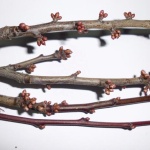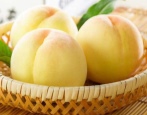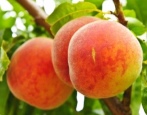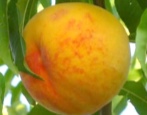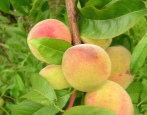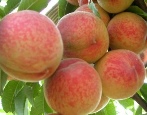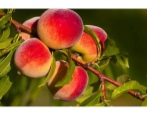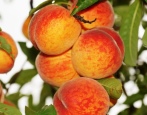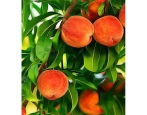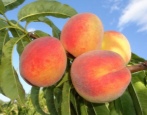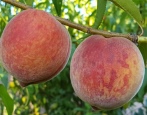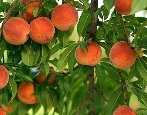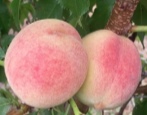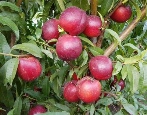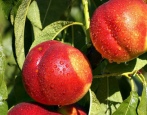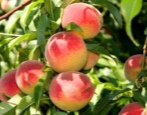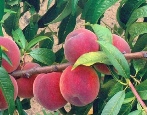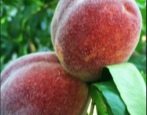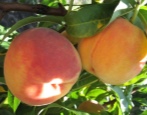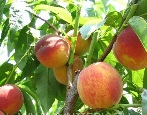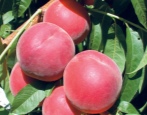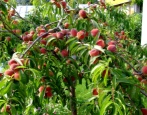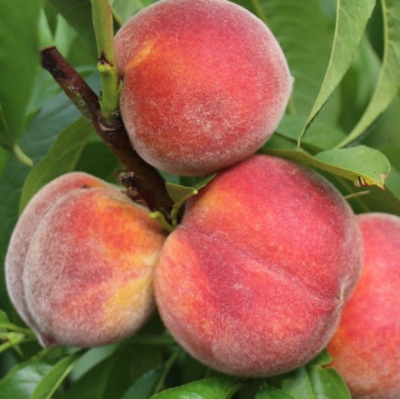
- Growth type: medium-sized
- Ripening period: early
- Appointment: for fresh consumption, for canning, for making juices
- Yield: high
- Early maturity: for 3-4 years of life
- Separability of the bone from the pulp: bad
- Winter hardiness: high
- Fruit weight, g: 60-80
- Abdominal suture: pronounced
- Fruit color: yellow with blush
Modern breeding offers peaches of completely different types, adapted to different climatic conditions. For our country, this is an invaluable gift, because it was not possible to grow a southern fruit in our garden at the beginning of the last century. The unpretentious Donskoy frost-resistant peach belongs to the group of frost-resistant varieties, whose fruits are suitable not only for fresh consumption, but also for winter harvesting, and are also highly transportable.
Breeding history
The variety was bred at the Donetsk Experimental Station by the breeder L. I. Taranenko in 1960.
Description of the variety
A medium-sized (3-4 m) tree has a compact crown of medium density and branching, with a diameter not exceeding two meters. Shoots are covered with brown bark with a slight brownish tint.
The advantages of the variety:
- early maturity;
- strong immunity;
- self-pollination and transportability;
- excellent taste and attractive appearance.
Disadvantages - reduced drought resistance, which leads to a loss in the quality and volume of the crop.
Smooth dark green leaves have an elongated oval shape with a strongly elongated, pointed end. The central vein and its lateral branches are clearly visible on the plate, the edges are even, without notches. The reverse side is lighter. The plant blooms profusely, rich pink and crimson flowers, acquiring the most decorative properties at this time.
Fruit characteristics
Large (60–80 g) rounded fruits are covered with strongly pubescent tender but dense skin. The coat color is yellow with a dark crimson blush that occupies most of the surface. The bone is rather difficult to separate from the pulp, the abdominal seam is clearly visible.
Taste qualities
The juicy, creamy pulp has a delicate texture that melts in the mouth and has a strong aroma.
Ripening and fruiting
The variety belongs to the early maturing, the regular fruiting is extended - the harvest begins from mid-August and continues until mid-September. Early maturity - 3-4 years after planting.
Yield
Donskoy frost-resistant belongs to high-yielding varieties - on average, up to 10 buckets are harvested from one tree.
Growing regions
The peach is adapted for the southern regions and the central part of the Russian Federation.
Self-fertility and the need for pollinators
The plant is self-pollinated, therefore, cultivation without pollinating varieties is permissible, however, cross-pollination qualitatively increases yields.
Growing and care
Peach is a light and heat-loving plant, therefore, a plot for it is selected with a southern orientation, protection from northern winds and drafts. The peach will develop on any soil, but fertility increases the yield and strengthens any plant.
Despite the increased requirements for irrigation, the variety does not like wetlands and the proximity of groundwater, whose presence will inevitably cause rotting and death of the root system.
The planting season is spring or autumn, but in the southern regions, autumn planting is preferred. When choosing a material in a nursery, preference should be given to seedlings with ZKS (closed root system), since they are more viable and spend almost no time on adaptation.
The optimal size of the landing pit is 50x50x60 cm or more.The soil should be pH neutral. If the ground has high acidity, measures should be taken to deacidify it. For this, dolomite flour, chalk, lime and so on are used. At the bottom of the pit, a 10-centimeter drainage layer of crushed stone, pebbles, gravel, broken brick is arranged and a support for the seedling is immediately installed.
The infertile layer is removed, the upper soil is enriched with organic matter (humus, compost, bird droppings), river sand, sod and leafy soil, complex mineral fertilizers, wood ash. After planting, the trunk circle is compacted by pouring abundantly with warm water. The next day, the moist soil is loosened or covered with a layer of peat mulch. Peat can replace straw, cut grass.
Further care consists of traditional activities typical for all fruit trees. Regular watering for young plants is as necessary as oxygen, especially during dry periods. An adult tree is watered less often, but at the same time the rate of water application under each root is increased - from 40 to 50 liters. Watering is carried out about 4 times a month.
In a drought, the peach responds gratefully to overhead irrigation. With a sufficient amount of natural precipitation, irrigation is carried out only as needed. Weeding helps preserve nutrients for the cultivated plant, mulching prevents moisture evaporation and prevents soil cracking.
The introduction of additional nutrients begins 2-3 years after planting. In the spring, the culture needs nitrogen to build up the vegetative mass, during the appearance of the ovaries, potassium-phosphorus compounds are introduced, in the fall the trunks are covered with a thick layer of humus. During sanitary pruning in early spring, broken, dry, diseased and crooked shoots are removed. Formation relieves the crown from thickening.
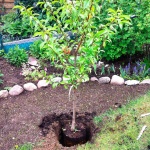
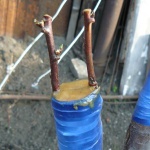
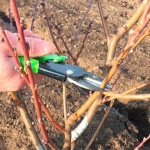
Frost resistance and the need for shelter
Donskoy frost-resistant has high winter hardiness, however, it tolerates prolonged drought worse. At this time, it must be provided with additional watering. The winter thaw is even more dangerous for him, when the kidneys can wake up by mistake and then die from the returned frosts.
Disease and pest resistance
The variety has a fairly strong immunity and copes well with the most common diseases - powdery mildew and curly leaves. Preventive treatments with insecticides and fungicides can help control pests and other diseases.
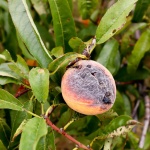
Requirements for soil and climatic conditions
A distinctive feature of this peach is its high frost resistance, the ability to withstand temperatures as low as -30ºC and below. And even in the event of freezing and death of the aboveground part of the shoot, the plant's regenerative capacity is at such a high level that in one season it completely restores the lost part. With droughts, the situation is more complicated - in this respect, the variety cannot boast of special characteristics and needs additional irrigation.
